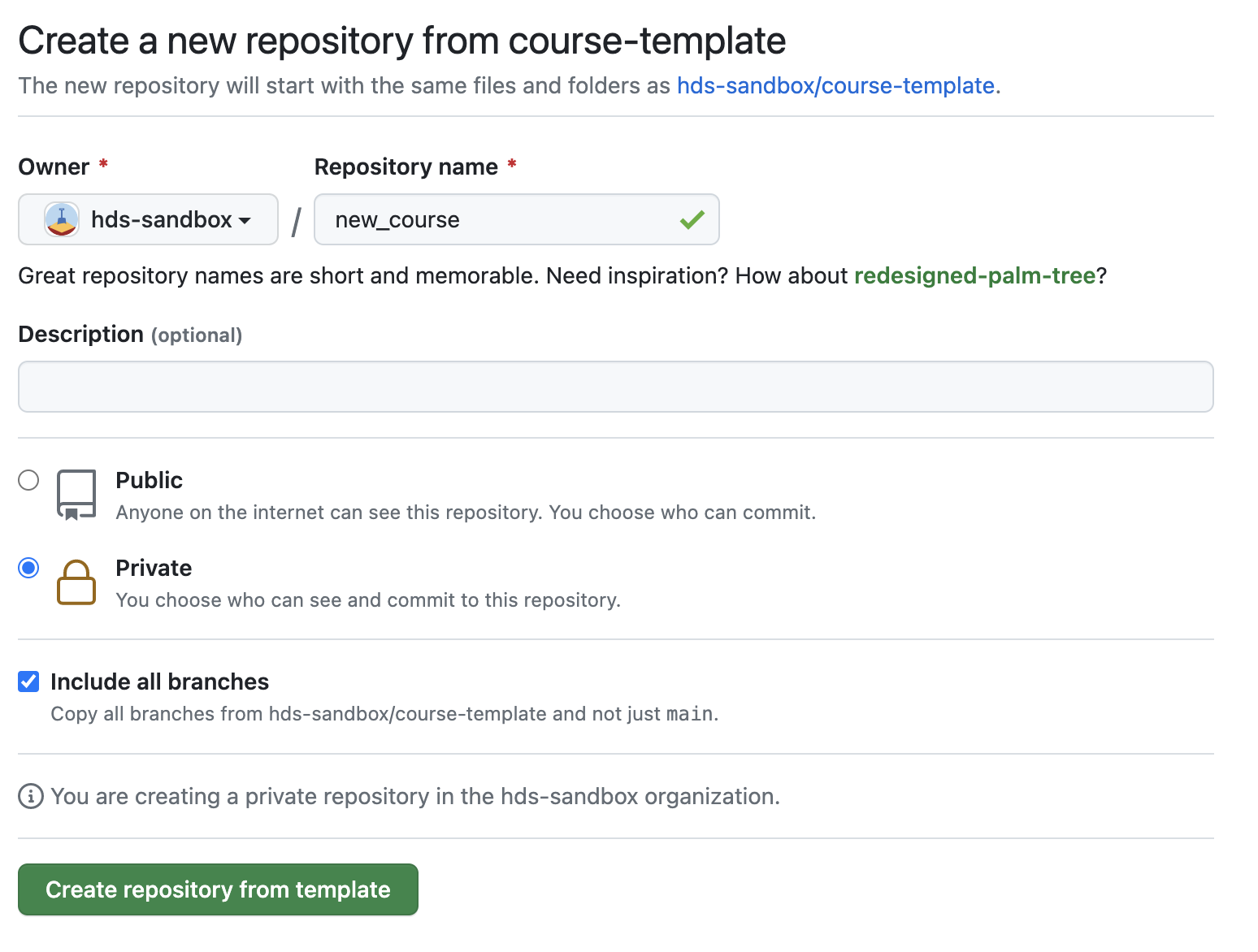This repository is a template for courses and webpages for self-learning.
In the pop-up window:
- Choose an organisation where the repository will be hosted
- Enter a name for the new repository (keep in mind that this will be part of the URL)
- Decide if the repository should be Public (most likely) or Private
- Make sure to tick
Include all branches - Click
Create repository from template
Go to settings and select Collaborators and teams under Access in the left side menu
- Click one of the green buttons
add peopleoradd teams - Select a person or a team to invite
- Selet the appropriate role
- Click
add user to this repository
Modify and add information about the new workshop/course.
The tmp folder just supports this README file, so you can just delete it after modifying it.
The main branch is a folder template to create the actual materials for a workshop session. Notebooks, exercises and materials associated to them (like images) should be here. On the other hand, actual data and slides are too big for a github repository. Such materials should be hosted in a zenodo repository.
Zenodo is a Open Science data repository from the OpenAIRE project supported by CERN to ensure that everyone can join in Open Science. It allows researchers to upload many different types of data and gives each repository a unique and citeable identifier (DOI). We can also link a Github repository and whenever you create a release for the github repo, it will give it as well a DOI. Follow this link for instructions We are using Zenodo to deposit slides, materials and data necessary for the course, relieving the size of the Github repo. It also makes it easier to update the materials and use them in the UCloud apps.
The webpag-mkdocs branch contains all the content needed to create and deploy the self-learning part of the course/workshop.
For more instructions, including how to set up Github Pages and automatic deploying of the webpage, check the README.md file from the webpage branch.
Note: MkDocs requires a lot of plugins, which can be deprecated over time. You can use the branch webpage-quarto which does not require extra packages and will be more longeve.
The webpag-quarto branch contains - as above - an example of webpage to create and deploy the self-learning part of the course/workshop. Go to the branch to see what you need (quarto and few R packages) to get going.
The tool that we use to create the website is called mkdocs with the theme material.
Mkdocs has a specific command mkdocs gh-deploy that takes the content of a branch and creates and deploys the website in a new branch called "gh-deploy".
In our case, it would use the branch "webpage" to create our website.
The branch "webpage" contains a github workflow that will automatically deploy the website using mkdocs gh-deploy whenever you push a commit to the webpage branch.

